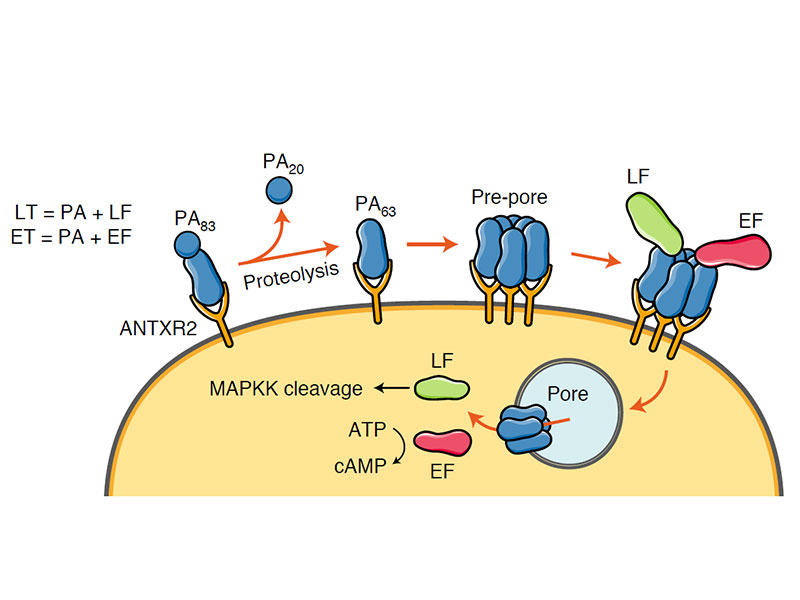
Anthrax toxins regulate pain signaling and can deliver molecular cargoes into ANTXR2+ DRG sensory neurons

Anthrax toxins regulate pain signaling and can deliver molecular cargoes into ANTXR2+ DRG sensory neurons
Nature Neuroscience volume 25, pages168–179 (2022)
Nicole J. Yang, Jörg Isensee, Dylan V. Neel, Andreza U. Quadros, Han-Xiong Bear Zhang, Justas Lauzadis, Sai Man Liu, Stephanie Shiers, Andreea Belu, Shilpa Palan, Sandra Marlin, Jacquie Maignel, Angela Kennedy-Curran, Victoria S. Tong, Mahtab Moayeri, Pascal Röderer, Anja Nitzsche, Mike Lu, Bradley L. Pentelute, Oliver Brüstle, Vineeta Tripathi, Keith A. Foster, Theodore J. Price, R. John Collier, Stephen H. Leppla, Michelino Puopolo, Bruce P. Bean, Thiago M. Cunha, Tim Hucho & Isaac M. Chiu
Abstract
Bacterial products can act on neurons to alter signaling and function. In the present study, we found that dorsal root ganglion (DRG) sensory neurons are enriched for ANTXR2, the high-affinity receptor for anthrax toxins. Anthrax toxins are composed of protective antigen (PA), which binds to ANTXR2, and the protein cargoes edema factor (EF) and lethal factor (LF). Intrathecal administration of edema toxin (ET (PA + EF)) targeted DRG neurons and induced analgesia in mice. ET inhibited mechanical and thermal sensation, and pain caused by formalin, carrageenan or nerve injury. Analgesia depended on ANTXR2 expressed by Nav1.8+ or Advillin+ neurons. ET modulated protein kinase A signaling in mouse sensory and human induced pluripotent stem cell-derived sensory neurons, and attenuated spinal cord neurotransmission. We further engineered anthrax toxins to introduce exogenous protein cargoes, including botulinum toxin, into DRG neurons to silence pain. Our study highlights interactions between a bacterial toxin and nociceptors, which may lead to the development of new pain therapeutics.



